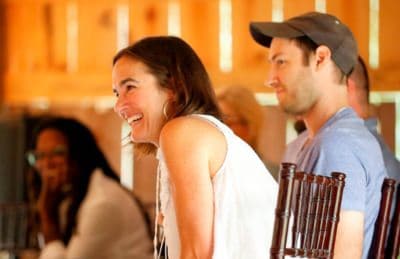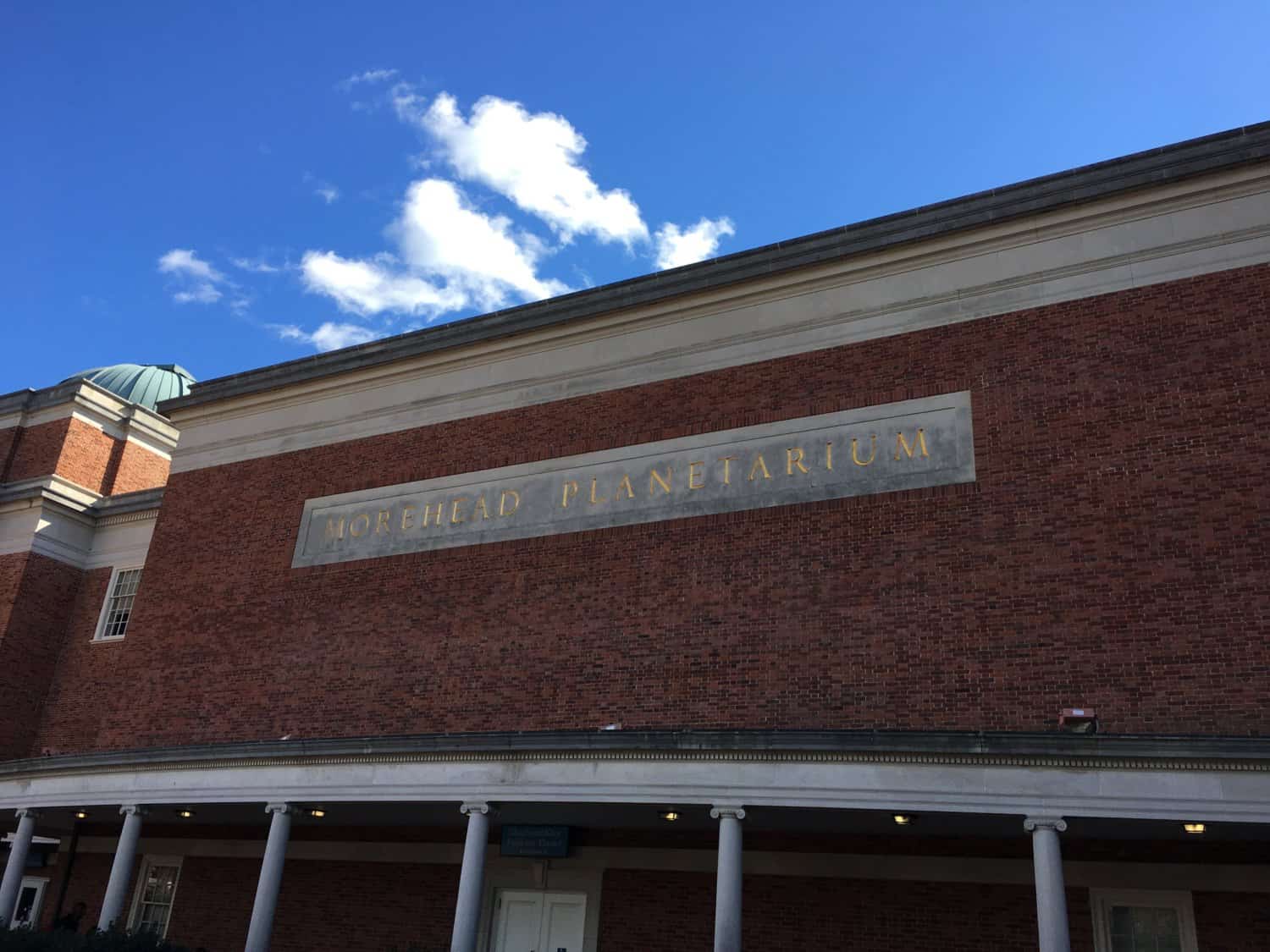In “The Longest Night: A Winter’s Tale,” a girl runs into a dragon’s nest during her journey to gather wood for a fire that will keep her family warm. The show was created by the Morehead Planetarium and Science Center, in collaboration with Paperhand Puppet Intervention, to feature in the planetarium. Thanks to its digital projector system, Morehead has been able to display elaborate shows like “The Longest Night” in addition to it astronomy-centered productions that planetariums have been known for.
Morehead’s planetarium shows are a central part of its science education. Busses have ferried children to learn under the dome from all over the state for years. From September to May during the week, especially in the spring, Morehead shapes its schedule of shows to accommodate school visits, while weekends are reserved for general audiences.
“We see about anywhere from 80,000 to 100,000 people here a year,” Crystal Harden, Morehead’s director of programs and strategic initiative. “And then a majority of that are school visits.”
The planetarium shows play a role in Morehead’s curriculum and programming, but making these shows is incredibly expensive. It takes Morehead $300,000 and a year and a half, and the process of recouping those costs is not sustainable.
“This is one that I think is relatively new and I’m sort of looking out on the horizon, saying this is going to become a bigger problem if we don’t deal with this as [planetariums],” said Boyette, Morehead’s director.
In 2010, Morehead’s planetarium transitioned from an analog projection system — including 35mm slide projectors — to a digital one. In anticipation of this installation, Morehead formed its own production team in 2006 to have content ready to premiere immediately and for the foreseeable future. Four years later, in July and August of 2010, an “advanced student” of the Kenan-Flagler Business School conducted research into the sustainability of Morehead’s production. What it found wasn’t good news.
“We would need to continue to get grant funding in order to keep production,” said Susan Durham, Morehead’s director of business operations.
The problem with grant funding, though, is that it is never guaranteed. Even if Morehead gets a grant — from NASA, the National Institute of Health, or the National Science Foundation — that process usually takes a year. “We can get a donor to give us money, but because it’s at least $300,000, usually that’s beyond most donors, so a lot of times we look at federal money,” said Jay Heinz, director of creative and experimental design at Morehead.
Once Morehead has determined the subject matter of a new show and obtained the money to produce it, a scriptwriter is hired. After that, the production team has to draw concept art and design storyboards. They record voice-over artists and design basic shapes and simple versions of final models for the show.
The team refines these models, creates the art, and adds special and final sound effects, including hiring a composer. The show is passed on to a “render farm,” where a group of computers convert the data for the animation and models into images. The last steps include color grading and editing before its public debut.
“Basically we’re making movies now,” Boyette said about the production process.
The decision to produce a show usually comes down to one factor: a gap in its science education that Morehead feels it needs filled. If Morehead cannot find a grant or a donor to fill this gap, it can decide to pay for the show itself.
Those shows, however, are often very slow to recoup their costs. “The Longest Night” is one such production. On its own, Morehead’s ticket prices can only rise so much before people stop seeing the thirty-minute show at a planetarium. Morehead can decide to lease “The Longest Night,” whereby other planetariums pay Morehead to show the content Morehead produces for a certain amount of time. Industry standards, though, aren’t sustainable to turning a profit.
“Earth, Moon, and Sun,” which follows a character named Coyote who has many misunderstandings about our solar system, is one of Morehead’s most successfully leased productions. Those leases cost between $3,500 and $15,000, and last for 50 years. With recent productions, the industry has slowly moved away from that decades-long standard. For example, “Take Flight”, one of Morehead’s more recent productions about the history of aeronautics, can be leased 1, 10, or 15 years.
But to paraphrase Boyette, why would a planetarium pay Morehead to lease a show every 3 years for $3,000 when it can pay for “Earth, Moon, and Sun” one time and have it forever? Other factors, such as the newness of the content and market saturation (a show about one topic will have to compete with other shows on the same topic), build further obstacles to making a profit. The terms for leases, too, depend on the size of a planetarium, how much a planetarium can afford, and attendance to a planetarium. Morehead has to take into consideration all of the above, in addition to what others are charging for similar productions, when leasing their shows.
“We’re small potatoes. We can’t change the market,” said Durham.
“You’re either gonna solve it by either just ripping the Band-Aid off and start paying what you really should pay for it, and that’s short term leases, or you’re going to short-cut and have very low quality work,” said Boyette.
If the larger situation doesn’t change, it may mean something more drastic for Morehead.
“I don’t know if we’ve gotten to that yet, whether or not we want to stay in that field [as producers],” said Harden. Producing its own content has allowed Morehead to acquire programming that better meets its needs and thus offer a unique education for North Carolina’s school children.
If Morehead were to cancel its production efforts, its planetarium would be fully dependent on other producers for content. “You’re at the mercy of what other producers have chosen to produce and how much they’re gonna charge you to get that into your theater,” said Durham.
So how can Morehead get around this sustainability problem in a way that allows it to keep producing content?
“One thing I think that we can do here is have more local content,” said Heinz. “So more content that’s focused on North Carolina audiences and so that we’re not just playing a generic show. It’s something only people can get here.”
It would be incredibly hard to lease these shows to other planetariums given the local subject matter, however. But diversifying what planetariums could be used — as places to learn not only about astronomy, but science in general — might be the answer. “Another way is to try to keep pushing basically the public to think about planetariums in a different way as somewhere they can see things that are not necessarily space science but any type of science or just, like, art pieces,” said Heinz.
Recommended reading


